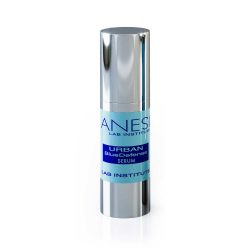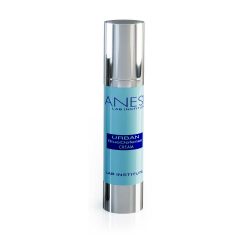- Combination skin
- Asphyxiated skin
- Combination skin
- Asphyxiated skin
Lab Institute Urban BlueDefense Home care
Professional treatment Lab Institute Urban BlueDefense
URBAN BLUE DEFENSE
Living in an urban environment takes a heavy toll on our skin. Recent clinical studies on pollution caused by light radiation and the environment show that our skin can be seriously affected, in addition to UVA and UVB rays, by the so-called “3P Aging” (Environmental Pollution, Light Pollution and Pollution from Electronic Devices), which increases the risk of blemishes by 22%. Other effects are: increased sebum, dehydration, skin disorders such as eczema, urticaria and dermatitis and loss of elasticity.
URBAN BLUE DEFENSE provides triple protection to combat all the external agents that damage the skin:
•Atmospheric pollution:mainly from exhaust emissions, tobacco, heavy metals and environmental dirt that penetrates the skin, causing genetic damage at the cellular level and inflammatory alterations (atopic dermatitis, photo-aging etc.)
•Electronic devices and light pollution: Blue Light is emitted by electronic devices, such as mobiles and tablets, TV and computers, as well as LED or fluorescent lights. It causes Reactive Oxygen Species to build up in the keratinocytes, which degrade the skin.
•UVA & UVB rays: Finally, we should remember the effects of solar rays on the skin, which are also increased when interacting with other pollutants.
The ANESI LAB INSTITUTE URBAN BLUEDEFENSE line has the following mission:
•To deeply clean and oxygenate the skin in order to free it from the polluting particles that get deposited on it, thus preventing them from entering the pores
•To reinforce and repair the skin’s natural barrier as the first line of defence against environmental pollutants.
•To protect the skin from HEV BLUE LIGHT radiation as a consequence of prolonged exposure to electronic devices, based on next generation breathable antiparticles and flexible membrane-forming agents.
•To protect the skin from emissions and heavy metals that penetrate the skin and create a film that makes it impossible for them to attach to the surface.
•To repair tissues that have been damaged by light and environmental pollution, as well as oxidative reactions at the cellular level, with natural active compounds, bionanotechnologically treated to achieve better absorption and efficacy.


